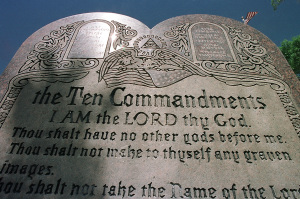World's Third Oldest Bible at Display in D.C.'s Smithsonian Museum
The world's third oldest Bible, transcribed in the late fourth or early fifth century, and an ancient parchment volume of Deuteronomy and Joshua, are on public display at the Smithsonian's Freer Gallery of Art in Washington, D.C.
The Codex Washingtonianus, also called the Washington Manuscript of the Gospels and The Freer Gospel and which contains the four biblical gospels, and the Old Testament gospels transcribed during the same period are on display in the Freer Gallery's Victorian Peacock Room until Feb. 16, 2014.
The two rare antique biblical manuscripts are being displayed around 100 years after they were first on view to the public in museum-founder Charles Lang Freer's Detroit home, according to a statement by the art gallery.
The Washingtonianus was written in Greek on parchment in the 4th or 5th century. Freer purchased the manuscripts in 1906 in Giza, Egypt, and later organized and underwrote significant early biblical scholarship, the gallery said.
"While researching their cultural context and physical structure, it was discovered that the Washington Codex contains a passage not found in any other biblical text – a segment at the end of the Gospel of Mark known as the Freer logion (a logion is a saying attributed to Jesus)."
A translation of the Freer logion reads: "And Christ replied to them, 'The term of years of Satan's power has been fulfilled, but other terrible things draw near.'"
"There's no religious tradition that uses it as part of Scripture," National Geographic quoted Michael Holmes, a biblical scholar at Bethel University in St. Paul, Minn., as saying. "It's almost like a margin comment that somebody wrote down because they heard it and wanted to remember it, and a scribe worked it in later."
Holmes also said 90 percent of the surviving biblical manuscripts are from the tenth century or later. "So anything that comes from earlier is intrinsically valuable."
There are only two other complete texts of the Gospels that are older – from the fourth century, Craig Evans, a biblical scholar at Acadia University in Nova Scotia, was quoted as saying. The two are the Codex Vaticanus, which is at the Vatican, and the Codex Sinaiticus, most of which is at the British Library in London.
The Washingtonianus is in rarefied company, Evans said.
The Washingtonianus was transcribed by two scribes, who likely copied from fragments of several Bibles, which were perhaps remnants from an attack on a Christian church at the time, Holmes said.
Due to their extreme fragility and sensitivity to light, the manuscripts are rarely exhibited, according to the gallery.




























